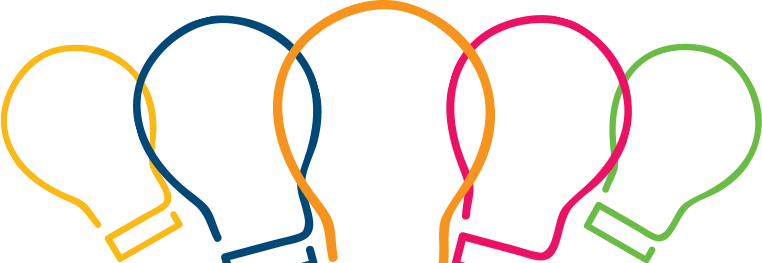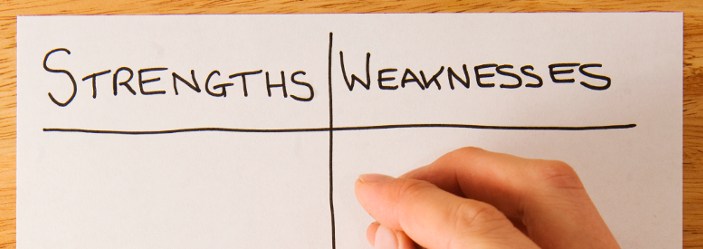Andy Lee
When learning to drive, one of the first things the driving instructor teaches you is where your blind spots are and how to locate them. A blind spot, within the context of driving, is an area that can’t be seen either when you’re looking ahead or when you’re checking your mirrors. There are two main blind spots: the area between what you see as you look forward and what you see in your exterior mirror, and the area obscured by the bodywork of your vehicle when you look in your mirrors. There are three steps in dealing with blind spots. The first is knowing that they exist. The second is locating them. The third is knowing how to deal with them in such a way that they don’t hinder your progress in life.
1. Do you have any blind spots?
Identifying your own blind spots requires a humble attitude, and strength in vulnerability in being open to the idea that there are things others see in you that you simply do not see in yourself. So, what things? This can refer to a broad range of things that we’re not conscious of but family, friends and colleagues are. For example: our habits, values, patterns of behaviour, feelings, emotional responses, thoughts etc.
So actually the question isn’t, “Do you have any blind spots?” It should really be, “What are your blind spots?”, which presupposes that you do have them. Although it’s generally an exercise in overcoming certain insecurities to confront these aspects of ourselves, doing so can be very useful when it comes to personal development and when it comes to improving our relationships with others.
2. What are your blind spots?
Finding out what they are is actually the easy part. The not so easy part is taking the first step to look. The reason we don’t do it is because it can be an uncomfortable process. We are not as this or that as we thought. We thought we were good listeners, only to discover that others think we talk too much. We thought we were decisive and strong leaders, but others see us as blunt, rash, and inconsiderate. We thought we were easy-going and flexible, but actually to others we appear lazy and uncaring. Maybe we believe ourselves to be spirited and passionate but are perceived by others to be intense and overzealous. Maybe we think we are intelligent and highly qualified but perceived by others to be condescending and elitist. Who we see in the mirror is not what others see when they look at us. The things that we do not see are not necessarily negative traits or limiting behaviours, but they often are.
However, there is so much to gain from seeking them out. It heightens our level of self-awareness, matures us as individuals in the professional and personal areas of our lives. We become more conscious and more connected with ourselves. We more readily accept where we are on our journey. We understand ourselves better and therefore what our purpose in life is.
So here’s how to move ahead with finding out what they are. Firstly, you can set some time aside by yourself and reflect on the following questions:
• What am I afraid of knowing about myself?
• What have been some recurring comments made to me about some aspect of me, even those ones seemingly said as a joke?
• What do I tend to react to (our pulse starts racing, we suddenly get hot under the collar, we start feeling an uncomfortable emotion such as irritation, or annoyance)?
Quiet introspection can be really valuable, as you develop the mental capacity to focus inward and better align who you want to be to who you are currently.
Here’s some questions you can ask others. You may want to start with people whose intentions you trust, to ease you in. No one is off limits though. Strangers and people you aren’t close to could surprise you with powerful insight.
Another way to find your blind spots is to ask those closest to you to give honest, constructive feedback about your strengths and weaknesses. When it comes to evaluating our behaviour, other people sometimes know us better than we know ourselves. Asking for feedback can be tricky to do, and people may not be totally honest for fear of offending or upsetting. On the other hand, people may appreciate the opportunity to air their grievances in a safe environment. Here’s some questions you could ask others, and as you ask, be sure to check your approach – if you sense resistance or withholding of information, it may be because they are fearful of a negative reaction:
• Is there anything about me that I don’t seem to see but is obvious to you?
• What habits do you notice about me when I talk to my mum/speak in public/answer questions in meetings/plans change/it rains??
• When do I overreact?
• Can you describe my reputation at work/home/church?
3. How do you handle your blind spots?
If you’ve made it this far, then you’re doing very well. Whether comments you’ve gathered are positive or negative, dissociate yourself so that you can think of them as a tool for improving your influence and your personal impact. By Looking at your feedback as a valuable asset rather than a judgment or criticism, you’ll be able to analyse it objectively and apply it much more productively. There is also a very good chance that you will uncover hidden strengths you’ve never recognised but others have noticed and appreciate.
“It takes courage to grow up and become who you really are” – E.E Cummings.



